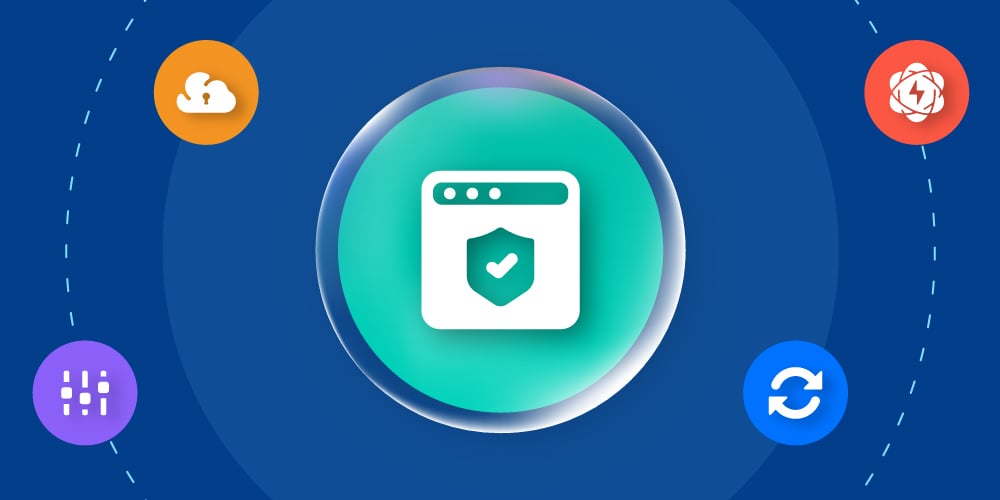Expert Advice on Establishing a Modern IGA Program, 5 Must-Ask Questions for Evaluating IGA Systems, and an IGA System Features & Functionality Checklist
Over the last few years, enterprises have been bombarded by change brought on by cloud acceleration, security threats, and constant technology transformation. For many, inflexible IGA technology worsened the challenges. Security leaders struggled to manage the rapid proliferation of identities, and manage risk among growing identity bases. They’ve found that they need to modernize their approach to IGA.
If, like many other security leaders, you’re considering a change in your IGA program, you’ve come to the right place. Choosing an IGA solution is a complicated process. Enterprises that start the evaluation process before an emergency arises have a much better chance of choosing the right IGA solution. To support this effort and help you choose platforms that meet your business and security KPIs, we’ve put together an IGA Solution Buyer’s Guide.
The IGA Solution Buyer's Guide examines:
- Why IGA modernization is no longer optional
- Major trends that will influence technology decisions
- The characteristics of a modern cloud IGA platform
- Five important questions to ask when evaluating an IGA solution
An IGA system is fundamental to modern enterprise security. Properly deployed, an IGA system regulates access to data and business transactions for human and machine identities. Importantly, IGA builds a foundation for Zero Trust security across cloud, hybrid, and on-prem environments. Does your current IGA solution offer the agility, scalability, and security benefits your enterprise needs going forward?
We’ll discuss these issues in this blog, the first in our series on IGA. The subsequent blogs will cover the difference between configuration and customization, legacy deployments versus cloud-native ones, and fine-grained versus coarse-grained entitlements.
New Demands on IGA Systems
While things are always changing, and no one can predict the future, it is helpful to look at trends. We’ve found the most important trends that will affect demands on IGA platforms in the near term. They are:
Cloud Adoption is Accelerating
Every day, more apps and workloads move to the cloud. Workforces operate beyond the confines of corporate offices, and converging IT and operational technology (OT) expand the threat landscape. As these dynamics play out, legacy systems flounder.
Legacy IGA systems limit visibility and rely on manual upkeep and custom coding. Further, SaaS proliferation makes enforcing identity policies (and identifying risky users) more difficult. Additionally, while leaders push the cloud for agility and productivity, maintaining security in the midst of rapid digital services adoption stretches IGA processes.
Identity is Becoming More Complex
‘Identity’ once meant human users within an organization’s walls. Today, the term represents a host of entities, including bots, APIs, workloads, vendors, contract workers, customers, and partners.
If an entity can be discretely identified – and has a consistent set of attributes, it needs securing. Constant digital transformation campaigns spawn legions of these new machine identities and widen attack surfaces. Meanwhile, poor access management and visibility multiply risks. Just 40% of CISOs and IT leaders say they have an enterprise-wide strategy to manage machine identities.
Cyberthreats Are on the Rise
The evolution of cyberattacks and growing use of cloud workloads and applications creates a “perfect storm” for IT leaders, suggests Gartner. According to one estimate, cybercrime will cost companies an estimated $10.5 trillion annually by 2025.
Complications from introducing new technologies, including IoT, open-source code, digital supply chains, and cloud applications increase threats. Companies must progress agile identity management, visibility, and monitoring–in particular, to limit compromise connected to application adoption, user permissions, system configuration, and new workloads.
The Regulatory Landscape is Evolving
At both state and national levels, lawmakers are pushing ambitious security legislation. As we’ve predicted, non-compliance issues worsen as companies sort through revisions and try to harden a variety of processes – from HR onboarding to customer offboarding – that impact data protected by various rules.
Companies need systems to enable least privilege and privacy by design, while focusing on pathways to simplify audit compliance, address consent management, and an individual’s right to erasure, for example.
These trends increase decision-making complications for security leaders. However, they may also provide the impetus enterprises need to introduce modernization.
In Search of a Modern IGA Solution
So what does a flexible IGA solution look like? According to a recent Forrester Report, “In replacing their manual identity management environments, organizations seek a flexible, comprehensive solution to improve workflows, eliminate compliance risk, and adapt to future IT trends.”
A modern IGA solution must:
- Be built on cloud-native architecture
- Emphasize adaptability
- Incorporate automation
- Converge technologies and functionality
Our Identity Governance & Administration Solution Buyer’s Guide provides a detailed discussion of each of the trends and how it affects the evaluation process for an IGA solution. The IGA buyer's guide then goes into an exploration of five crucial questions to ask when you’re evaluating the array of IGA systems out there, why the questions are important, and what to look for. It also includes a list of features and functionalities to consider when comparing solutions. The list is divided into six areas: user experience, automation, compliance, platform management, application management, and architecture.
More cloud infrastructure and apps come online with each passing day. With breaches increasing in severity and number, organizations need a cloud-architected solution to control access, protect critical assets, and minimize risk. With the stakes this high, choosing an IGA solution requires proper consideration. The right solution can open the door to better security, cost effectiveness, and operational efficiency.









